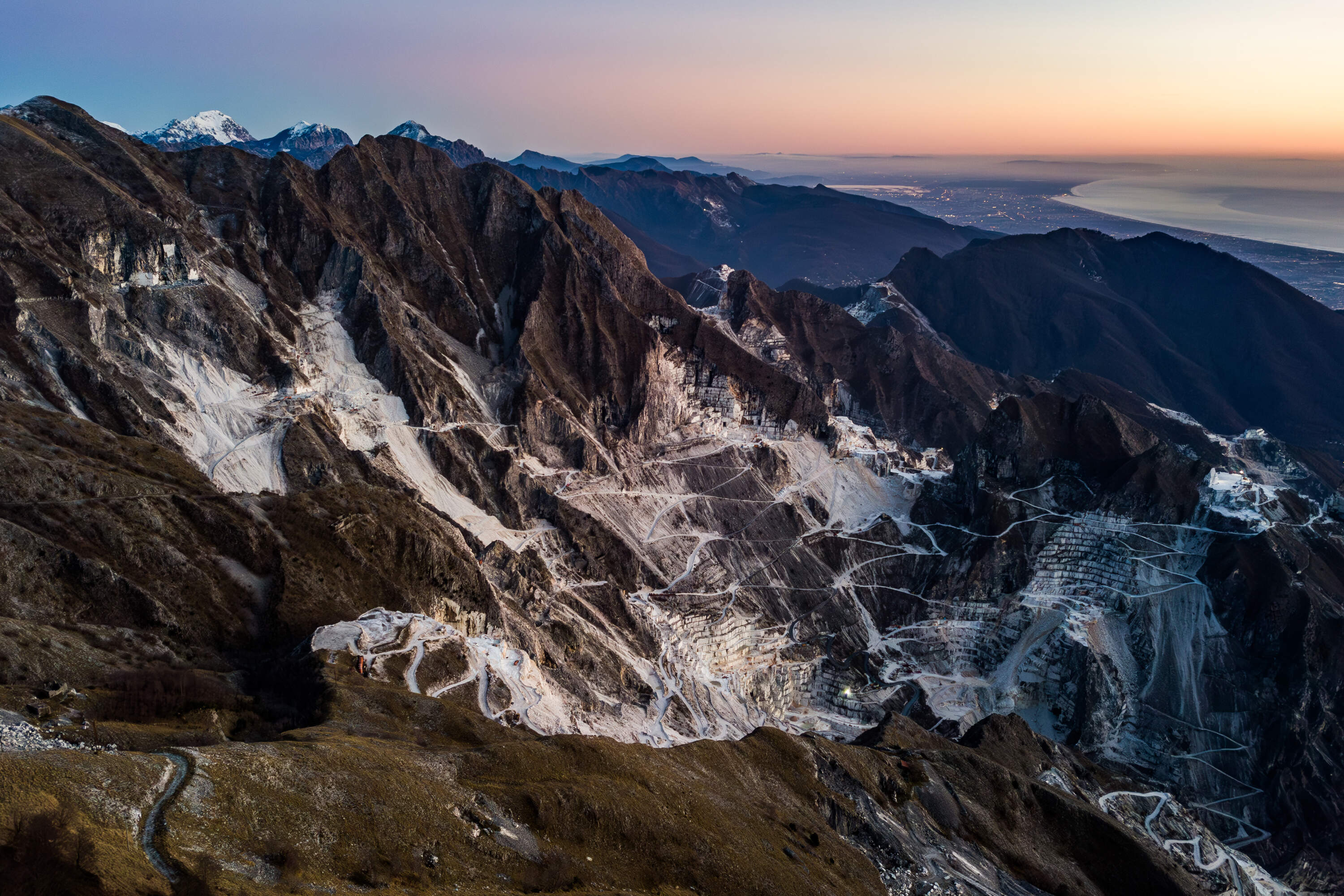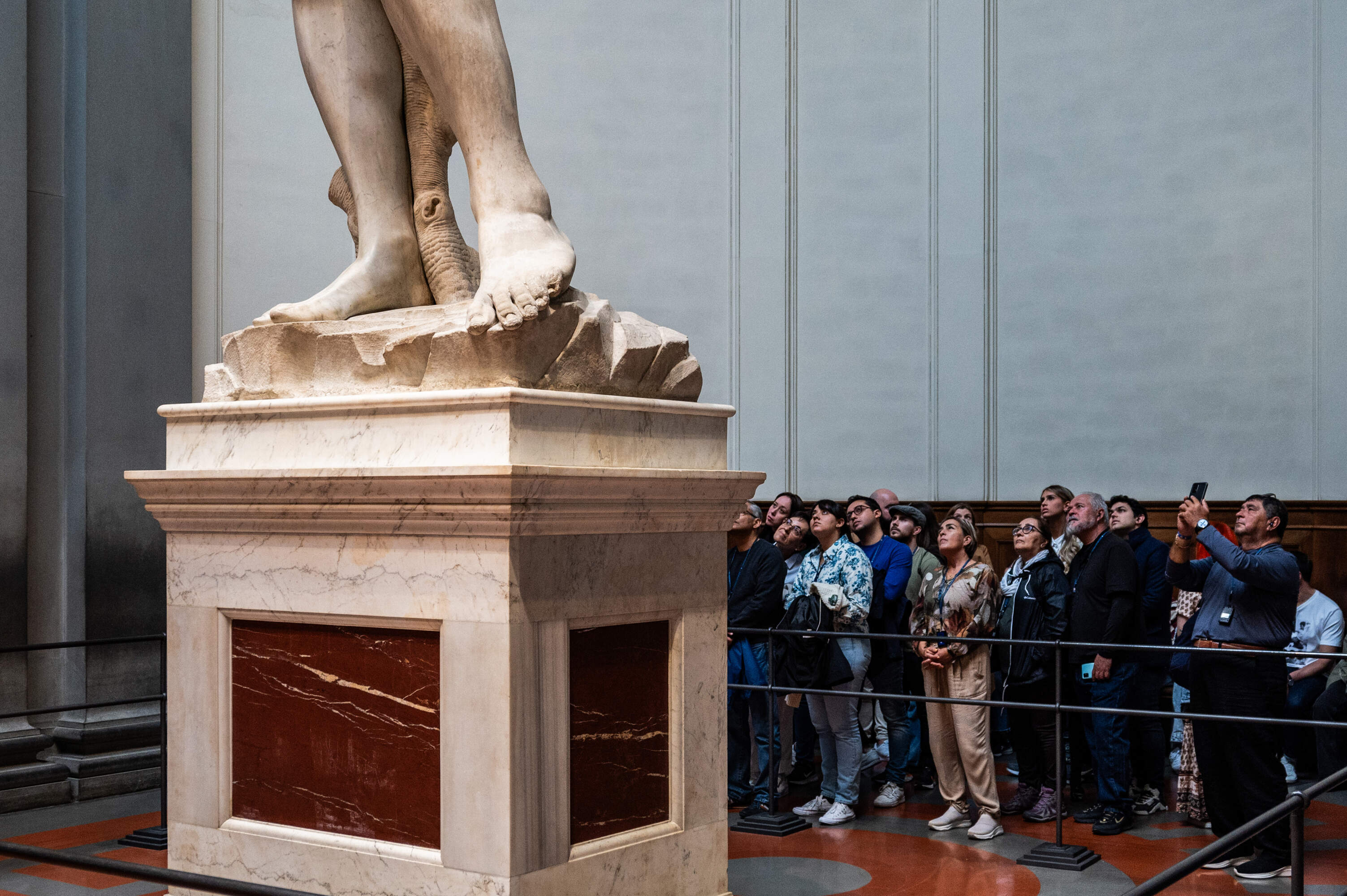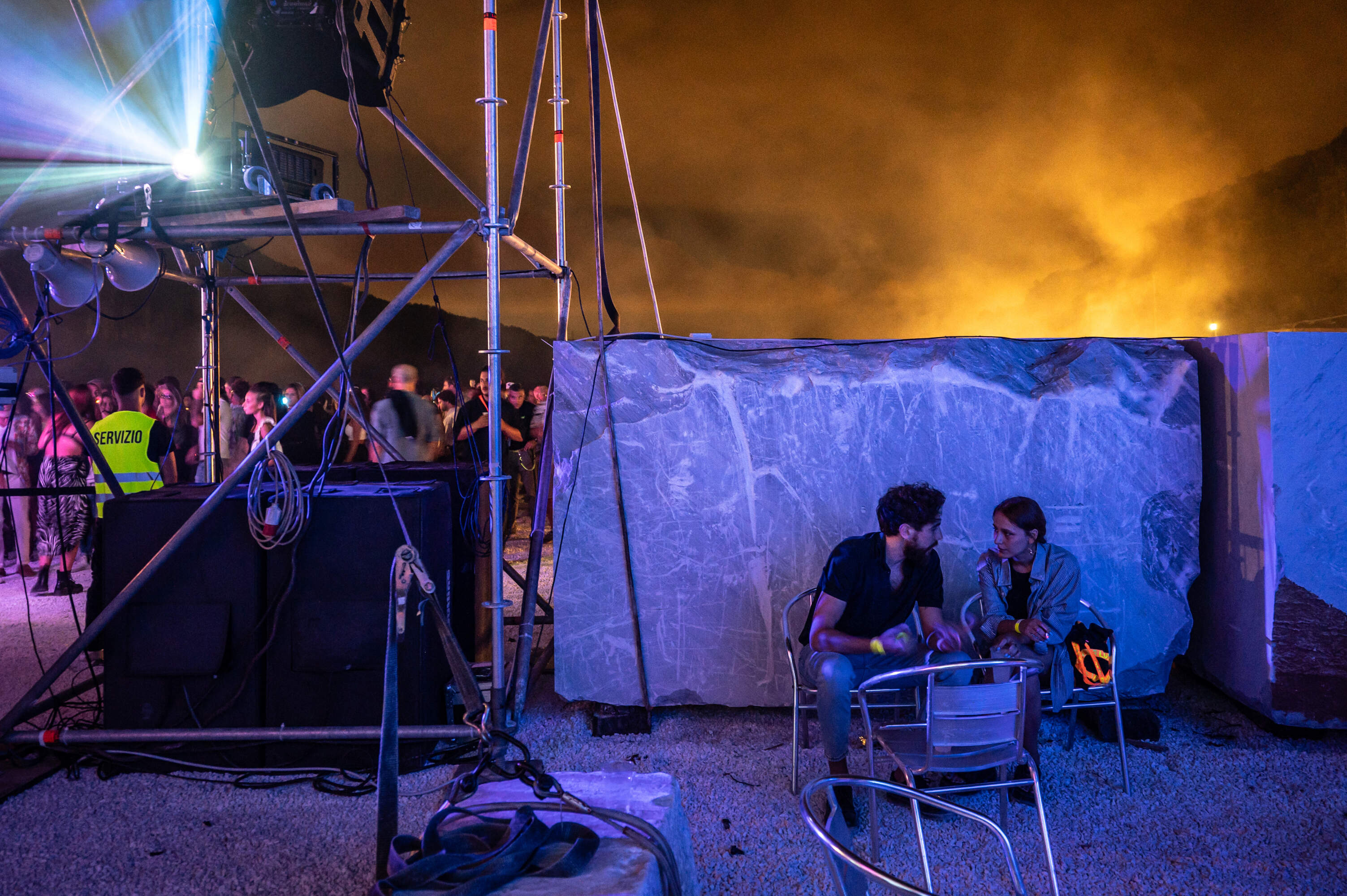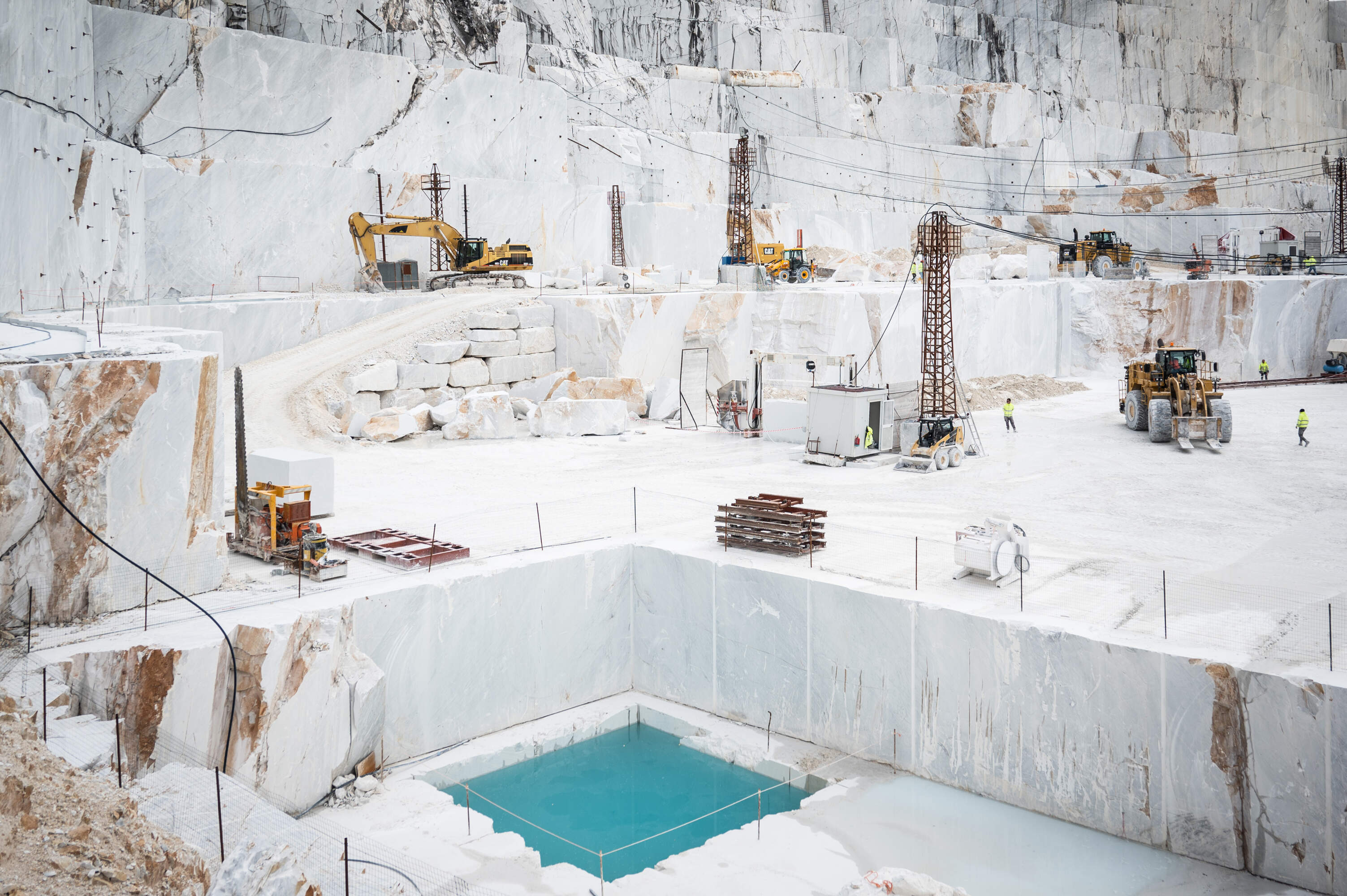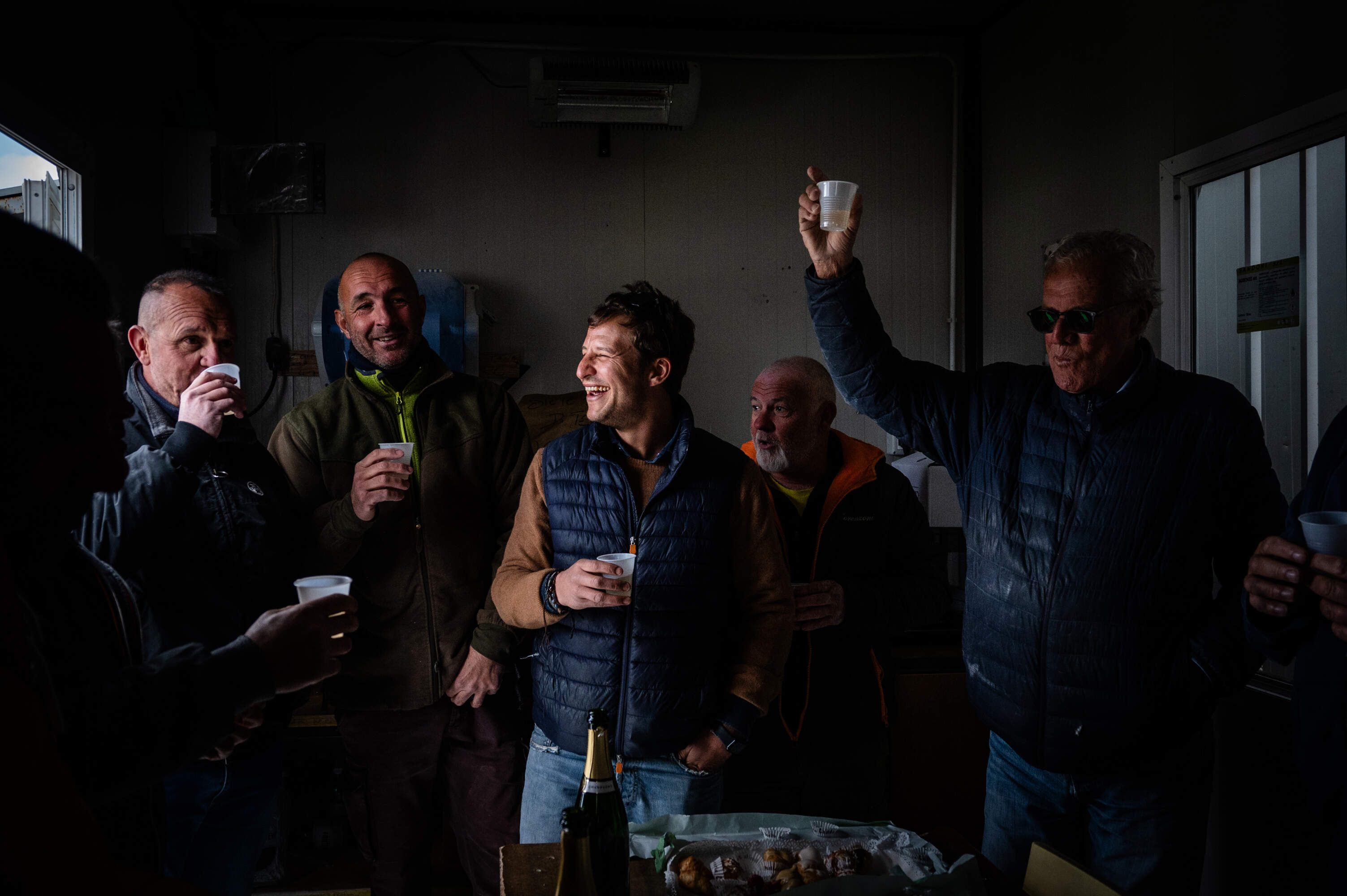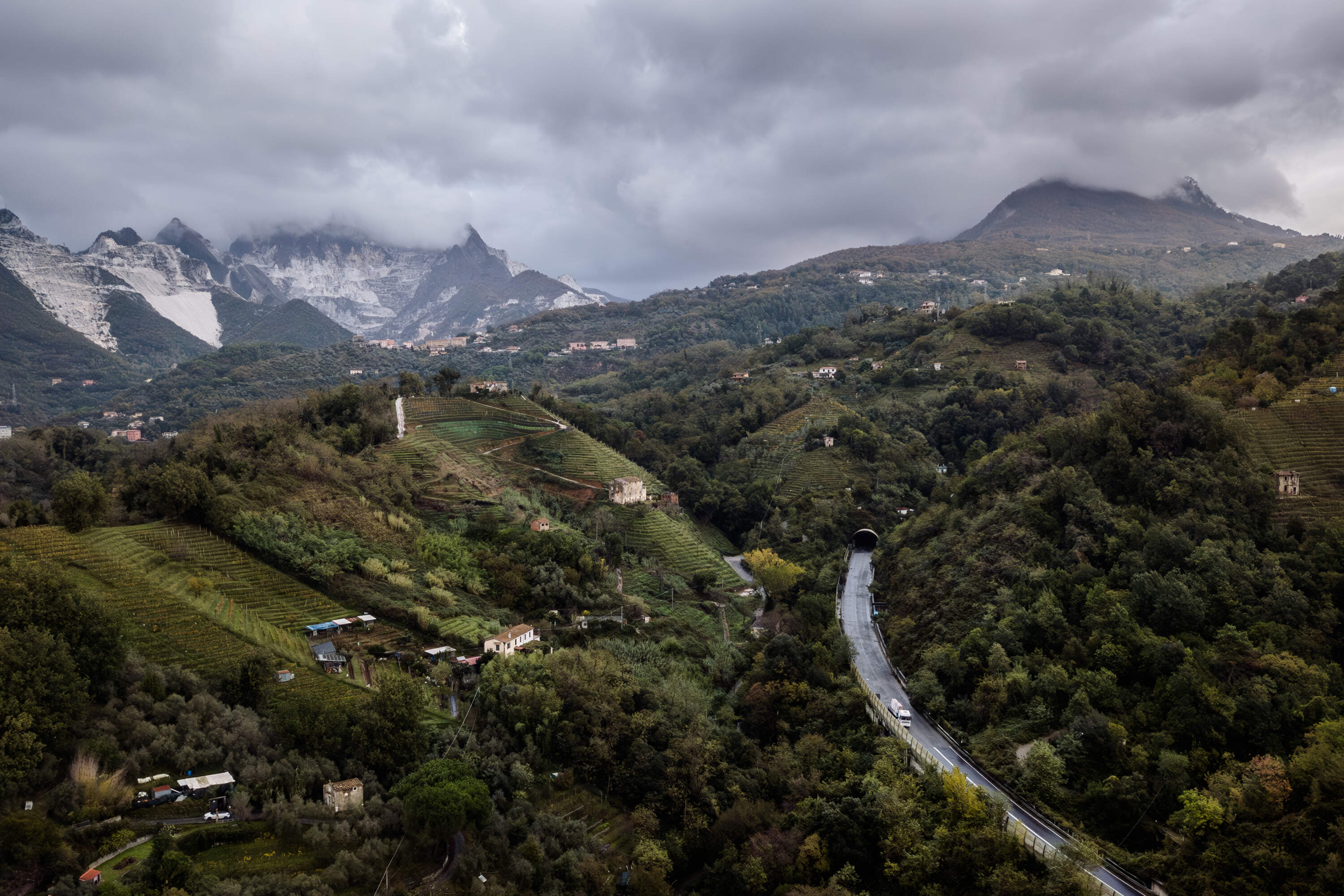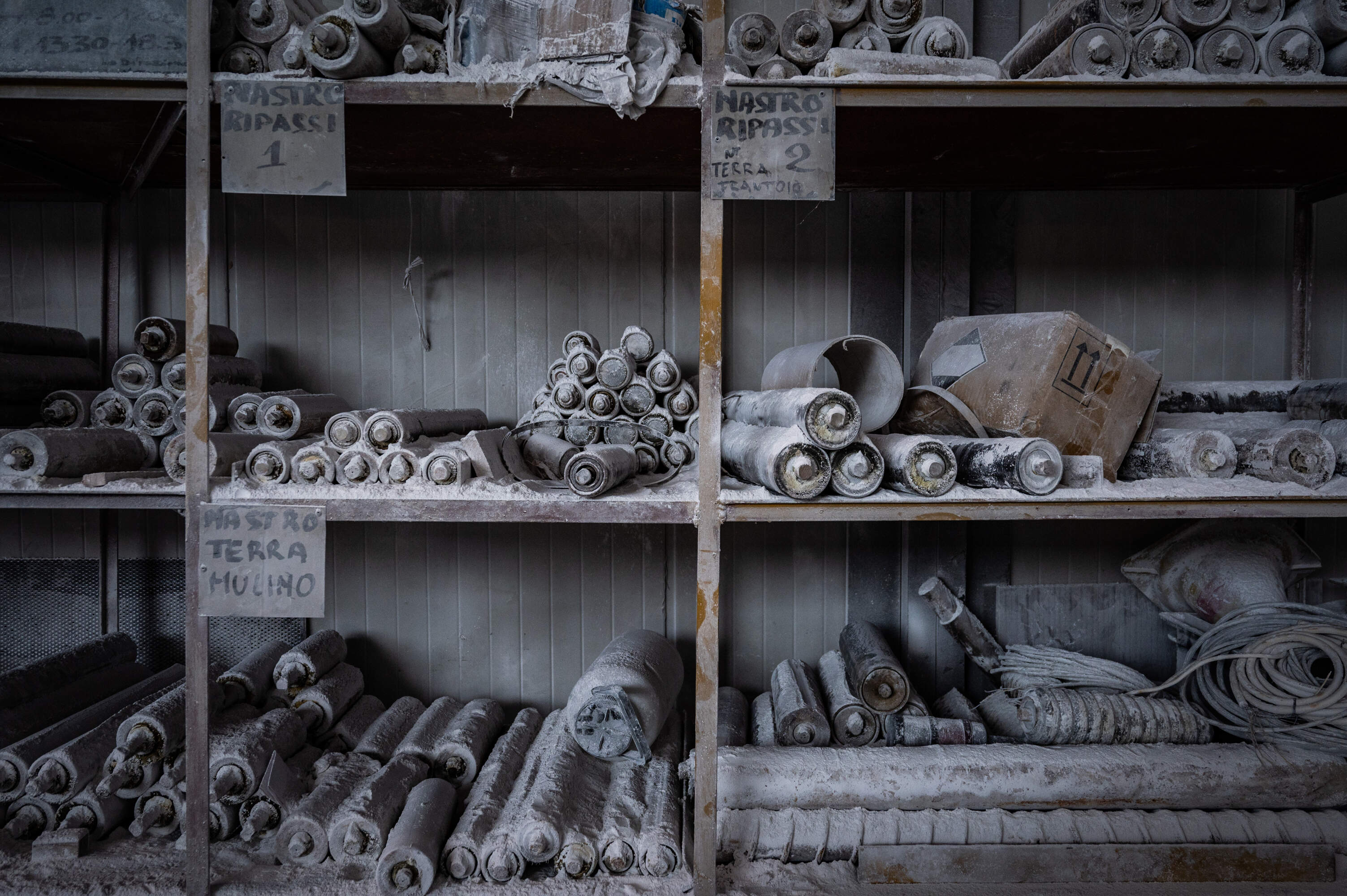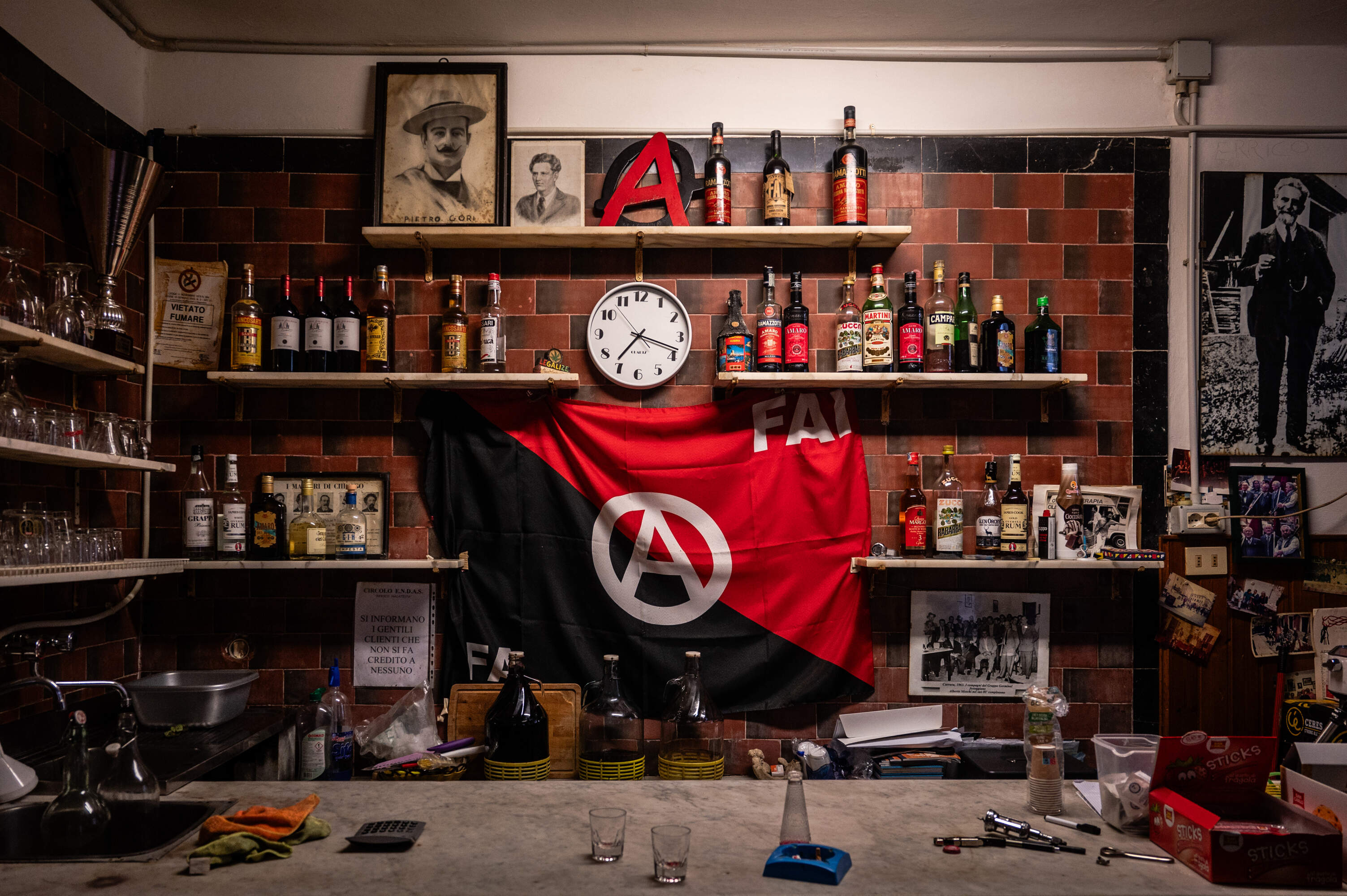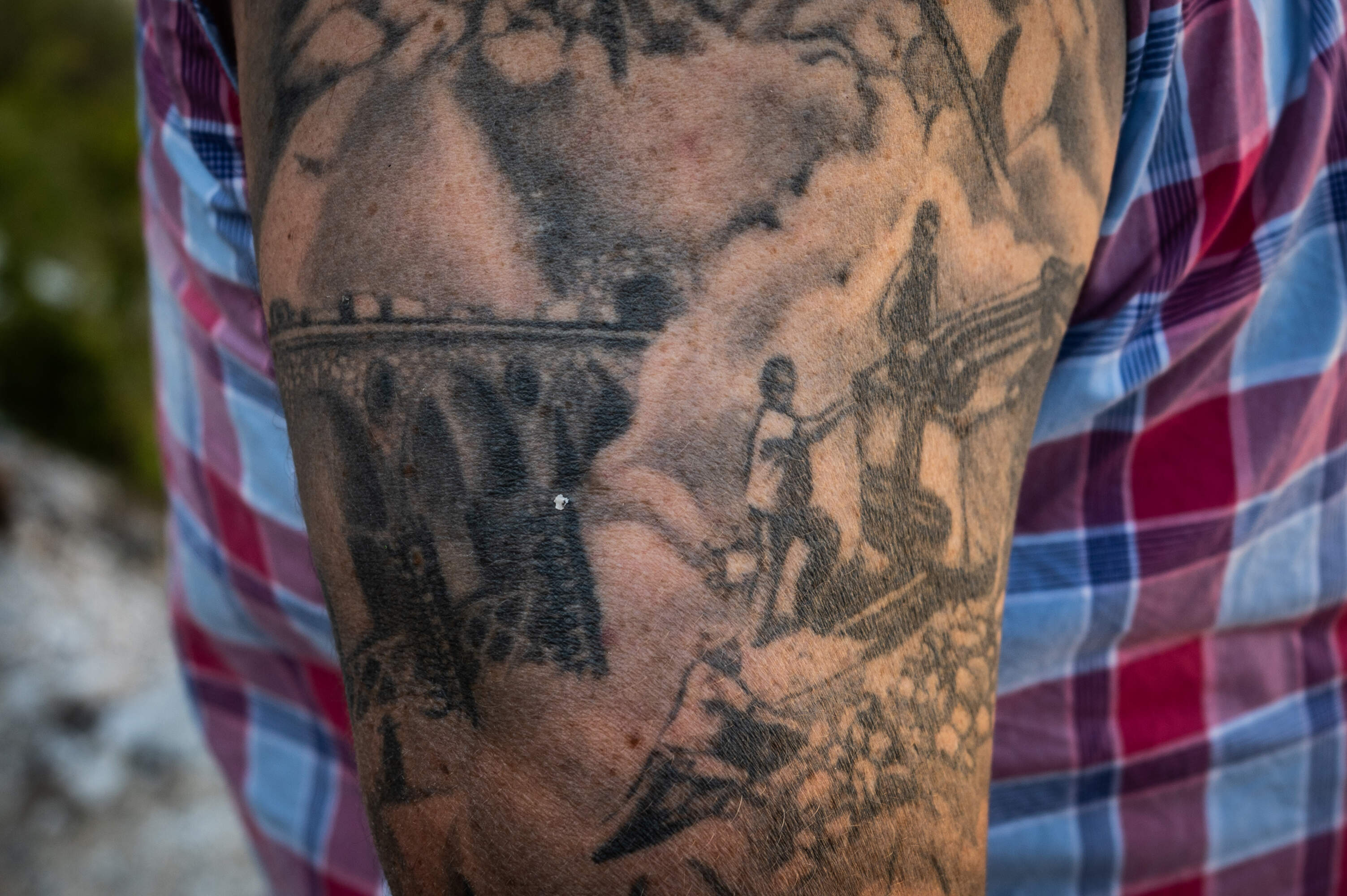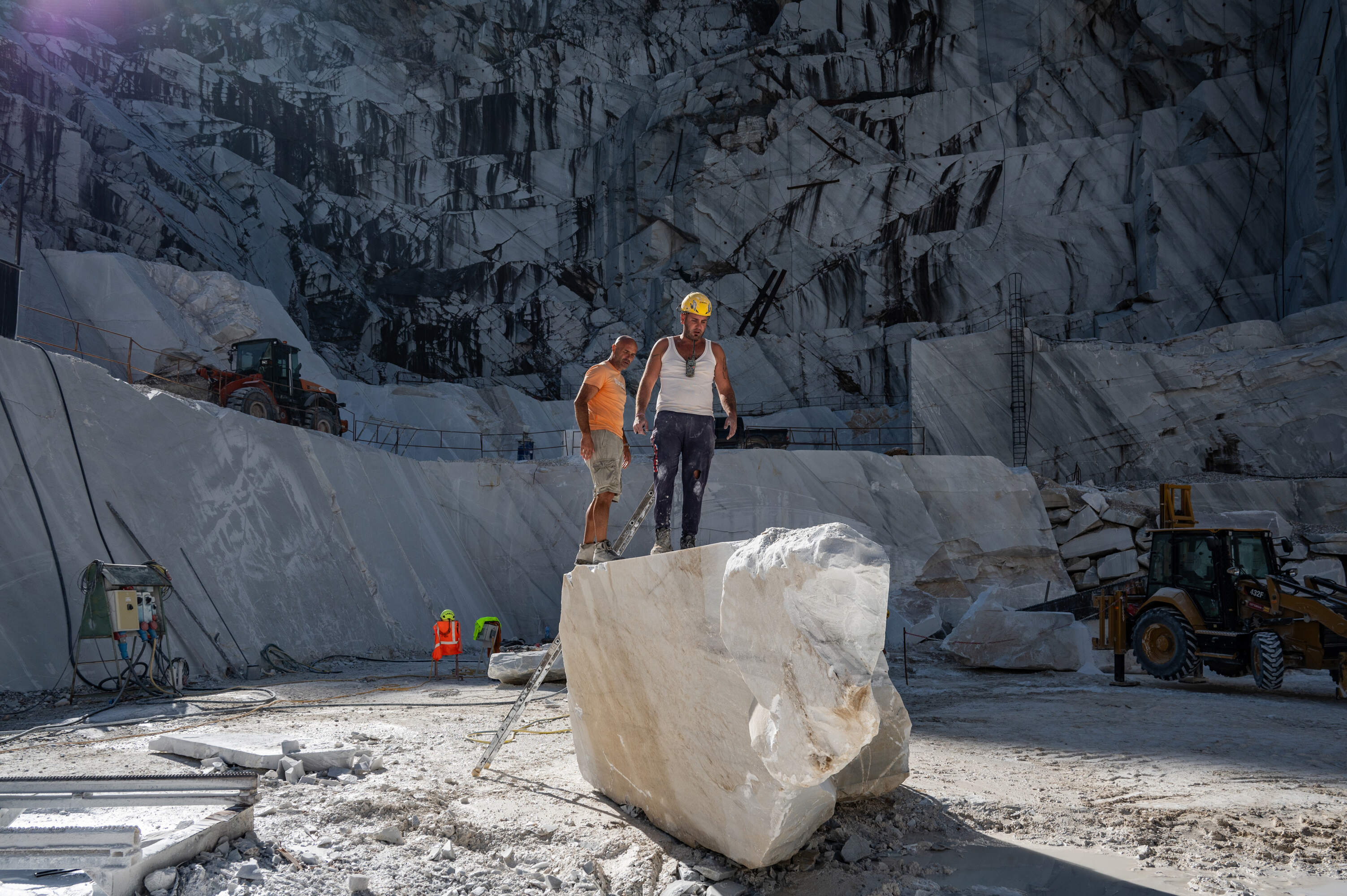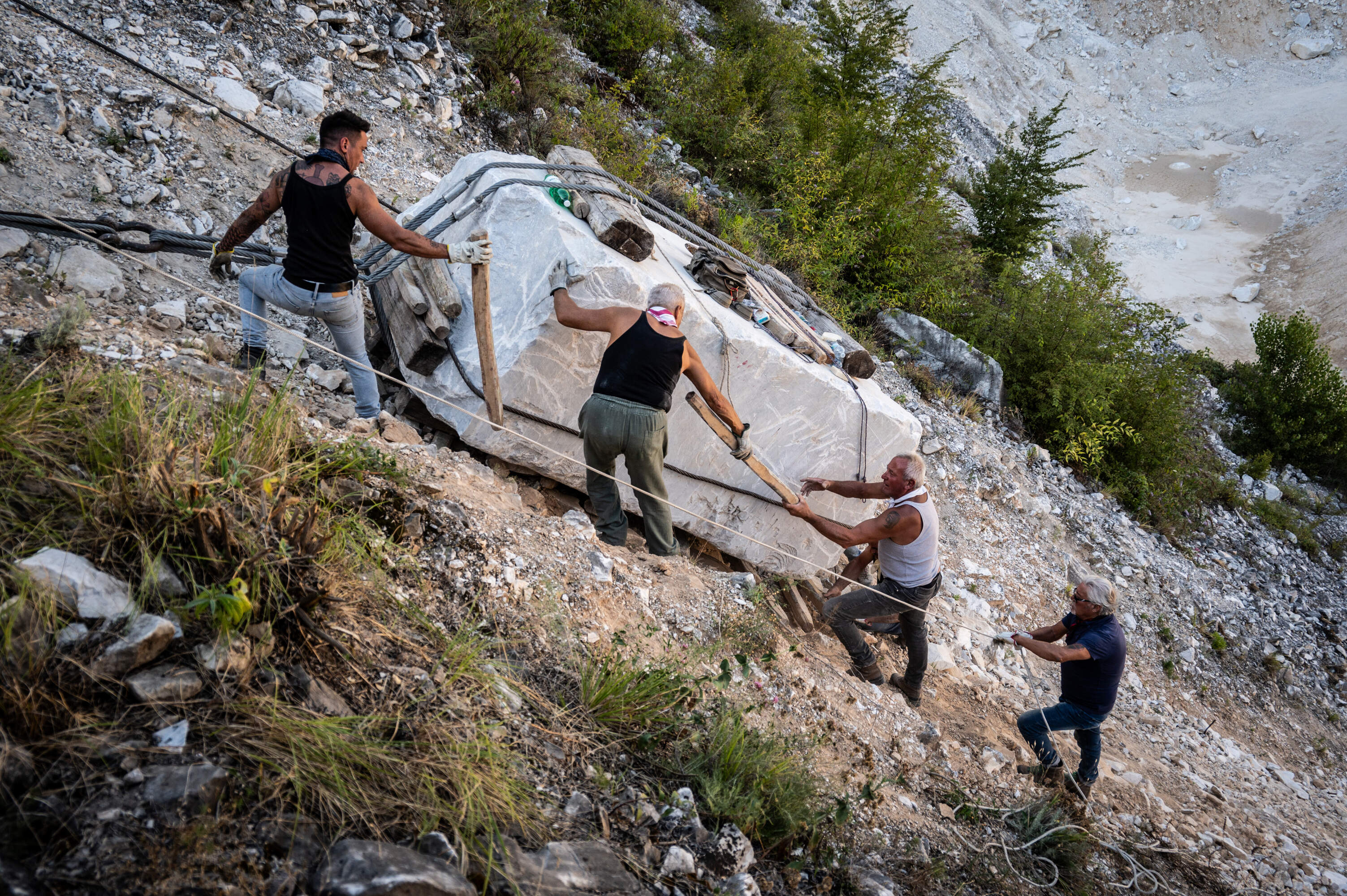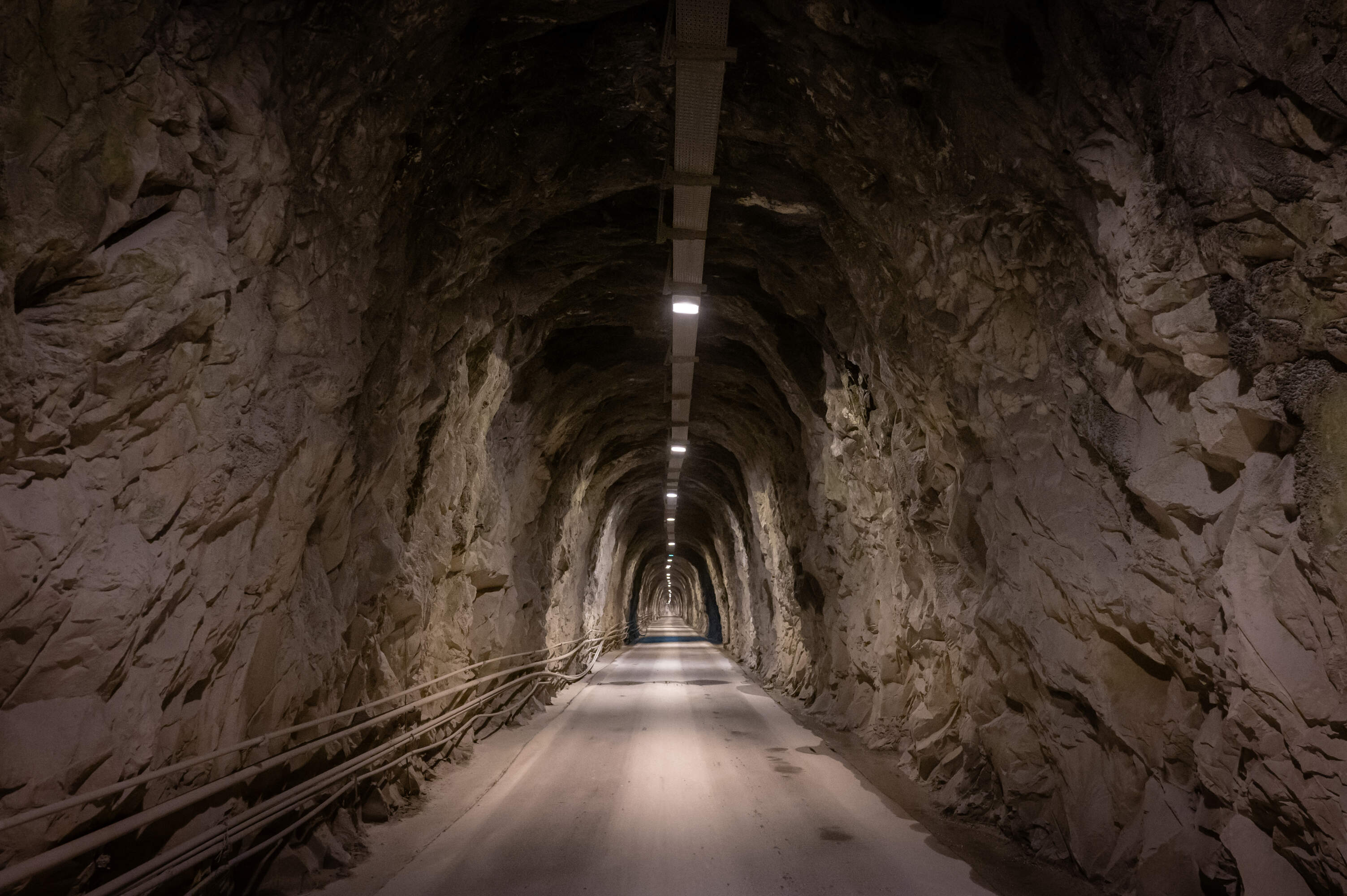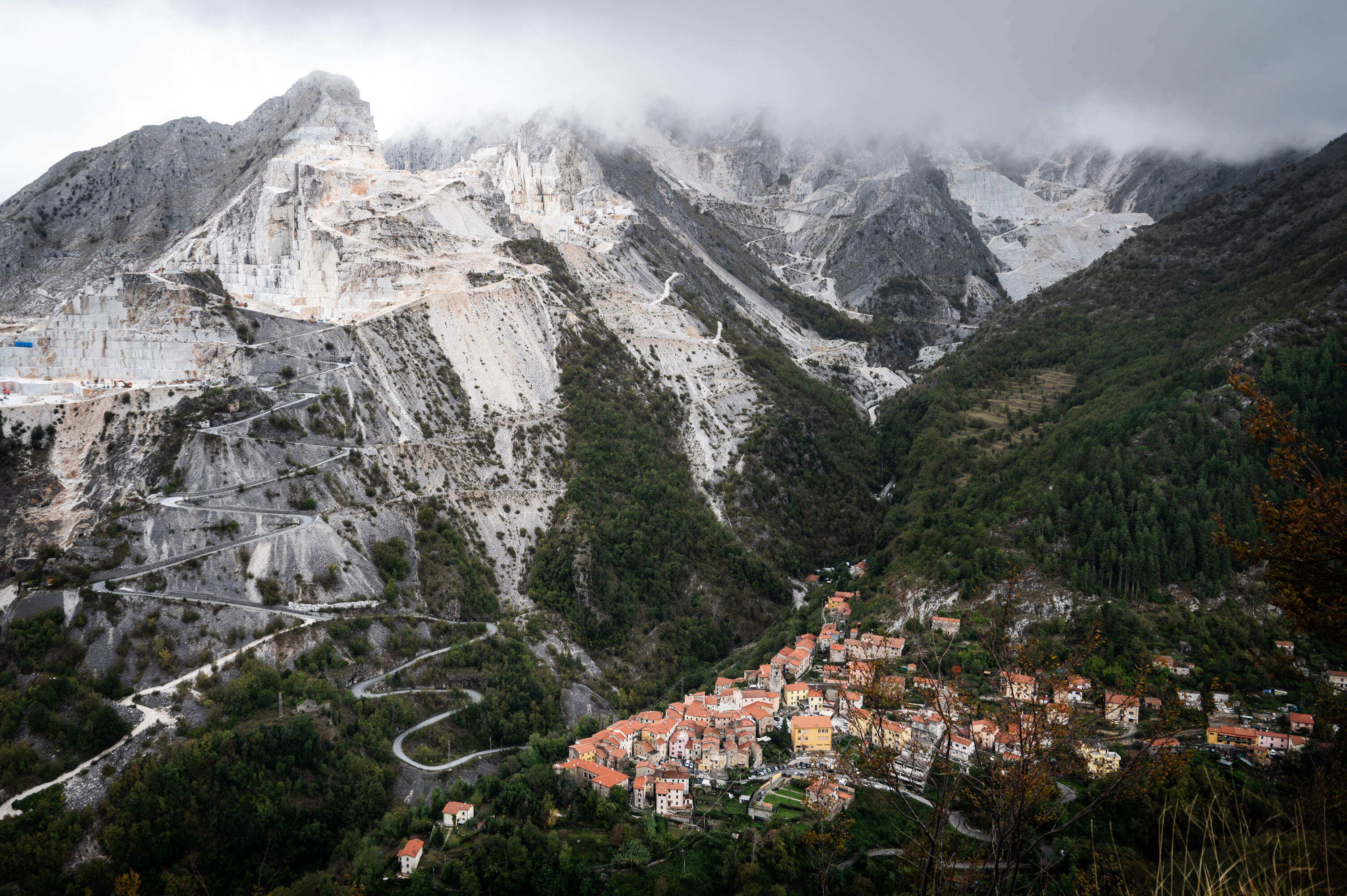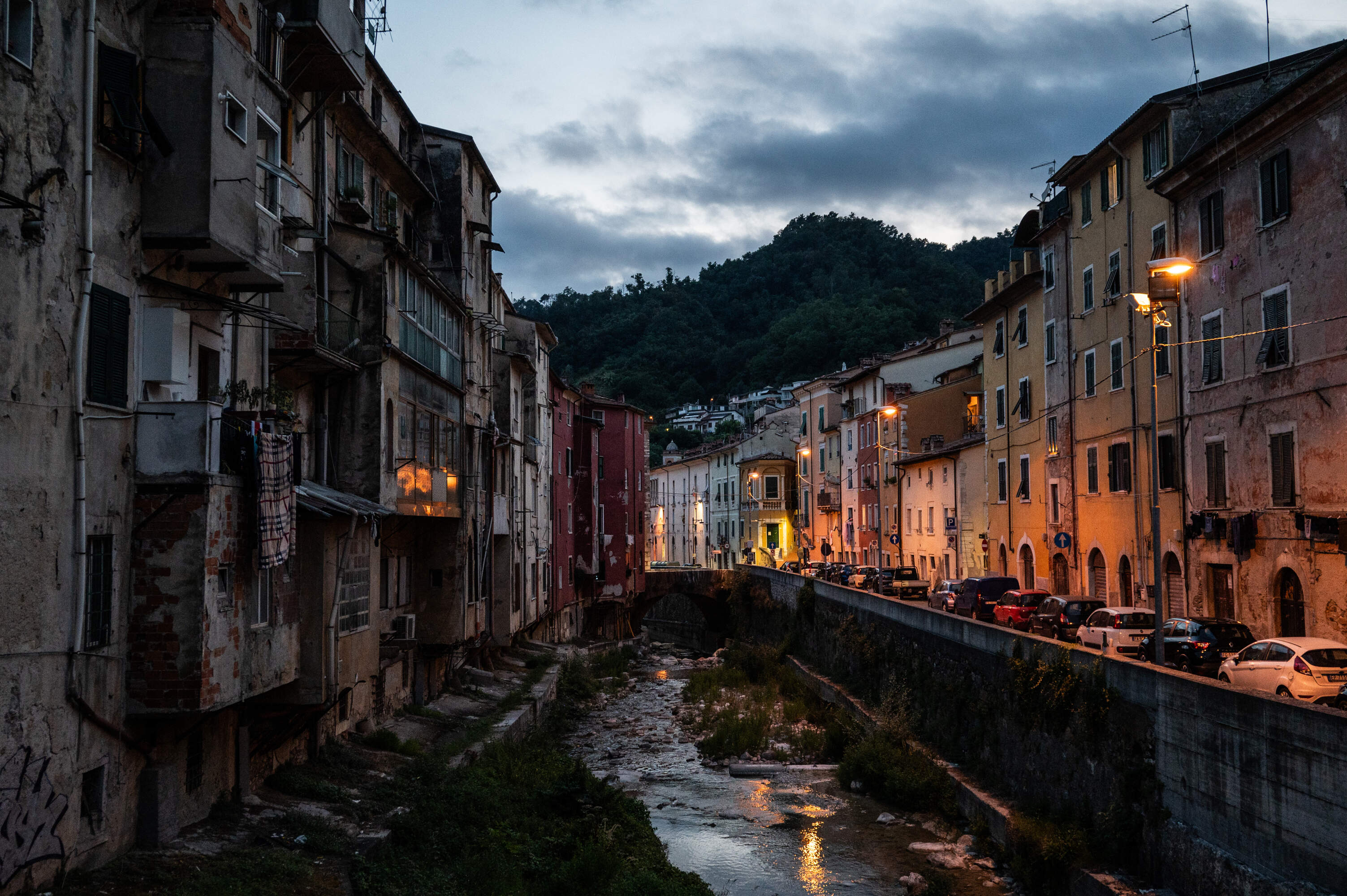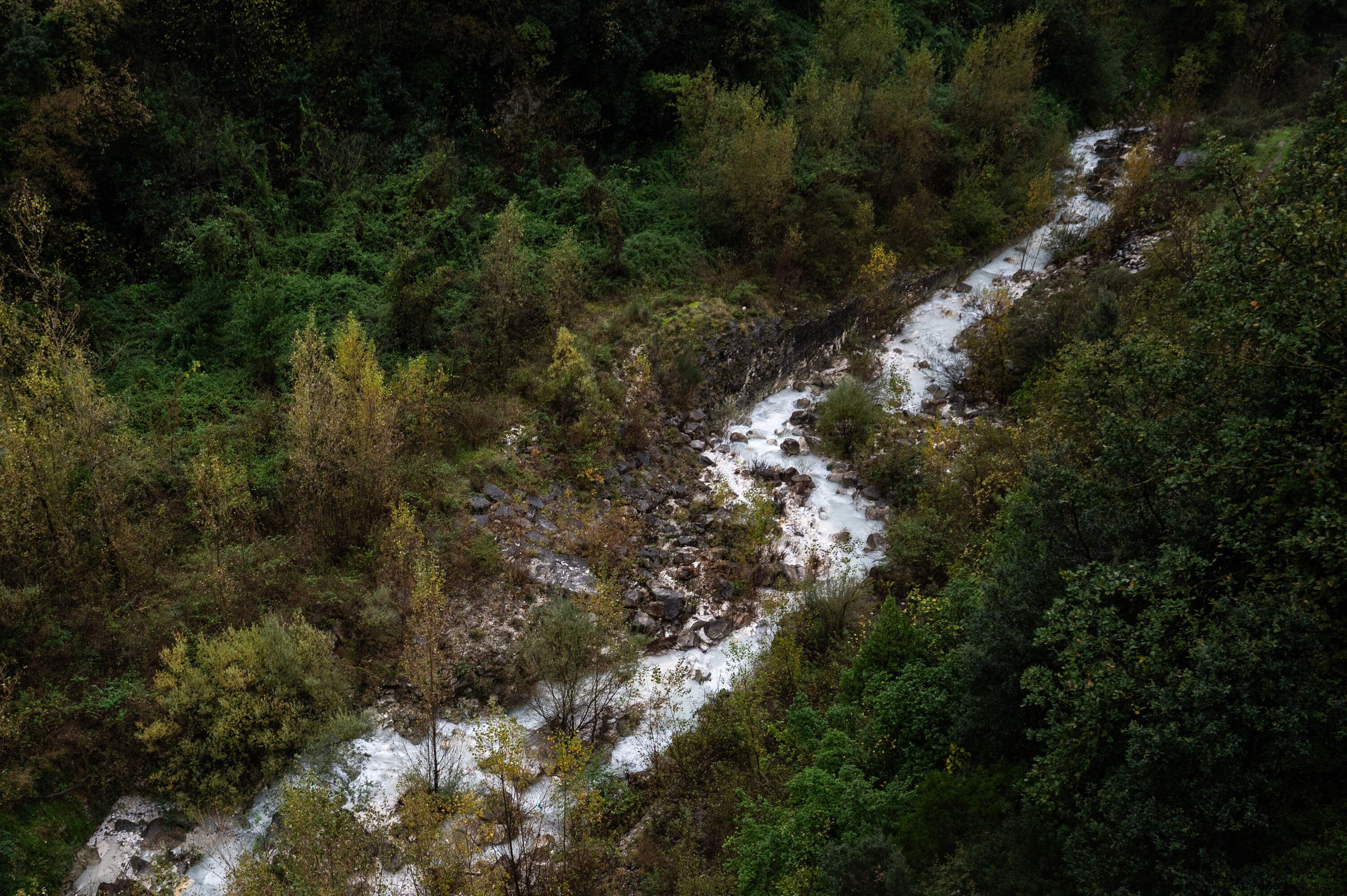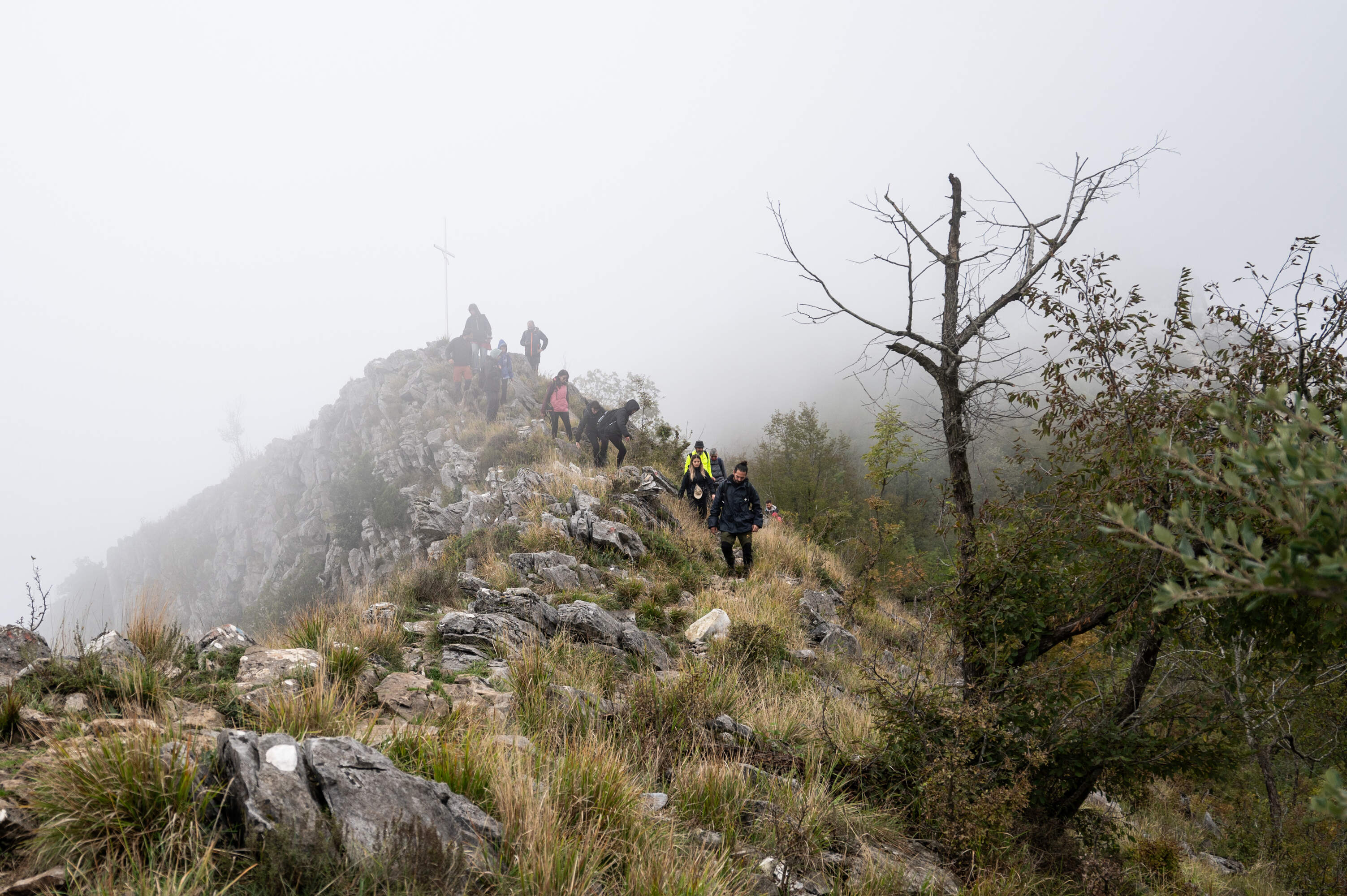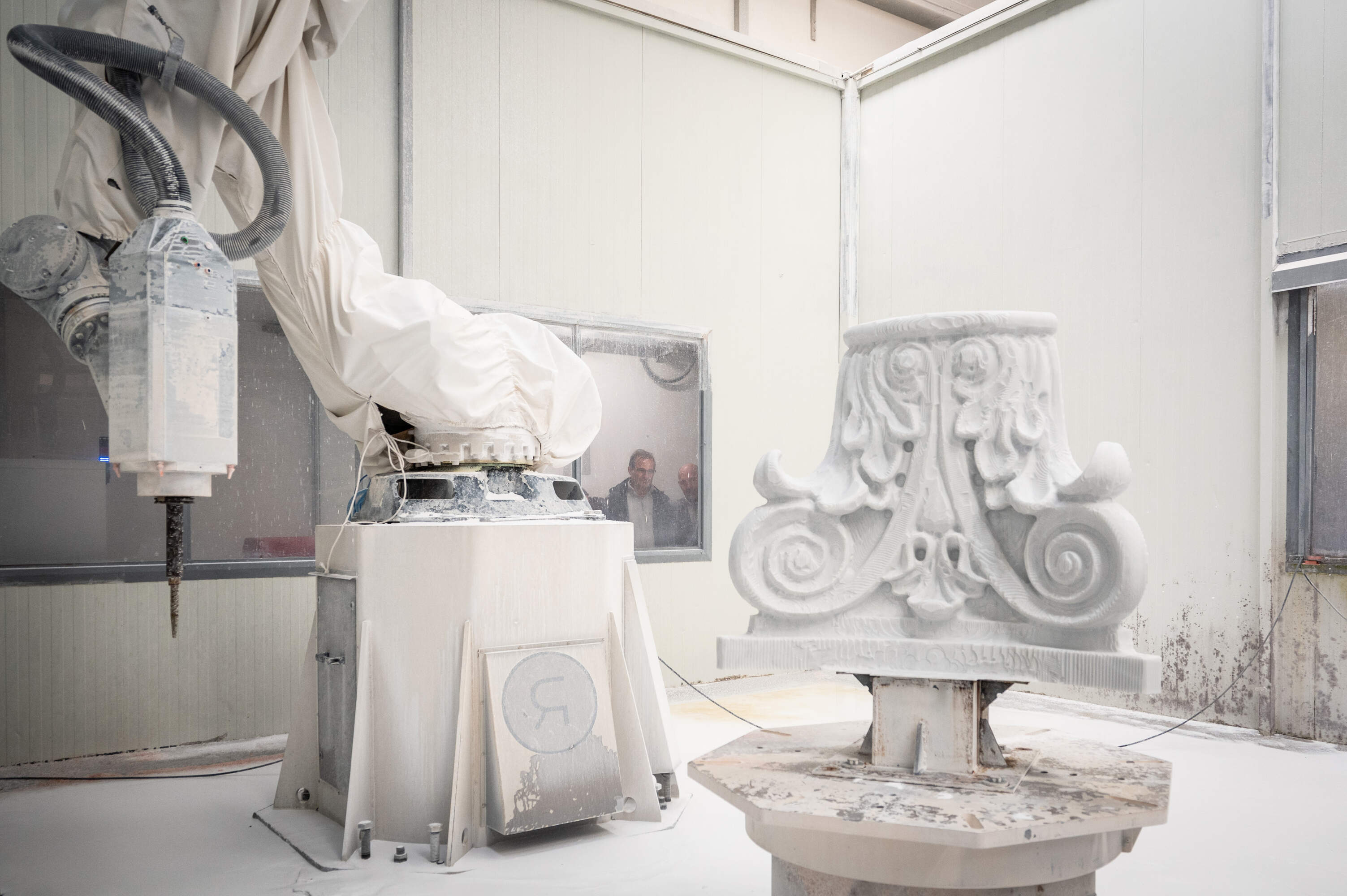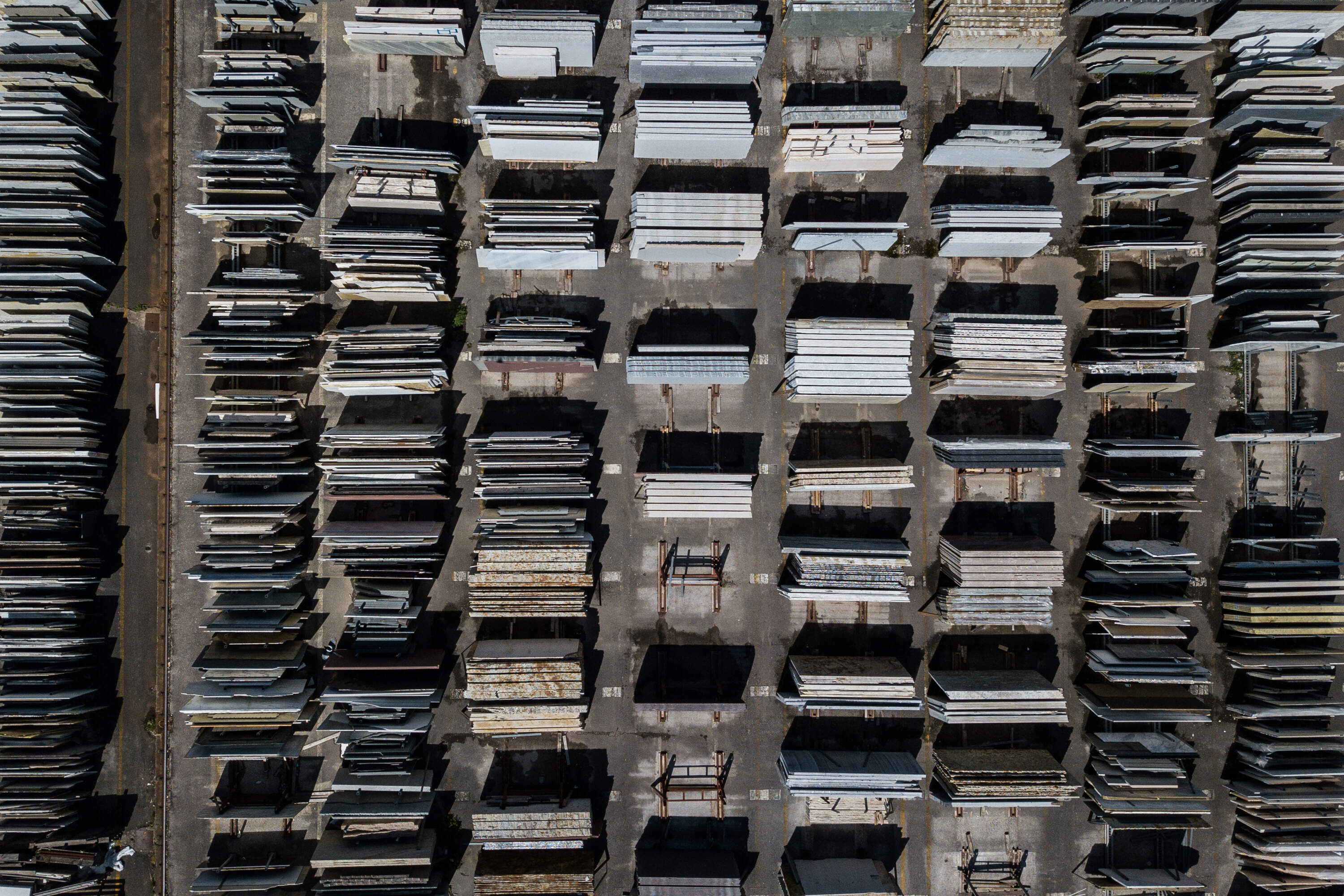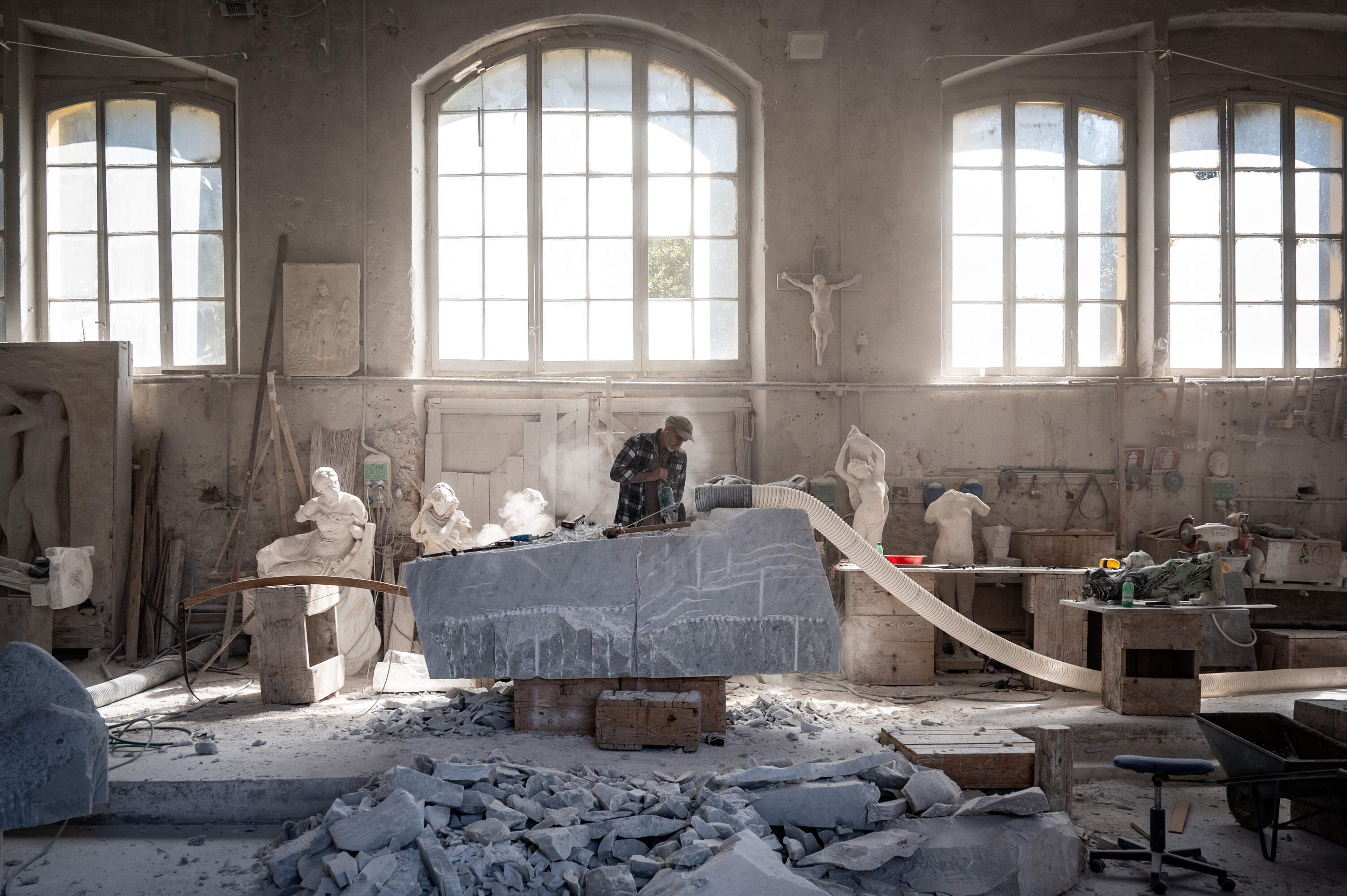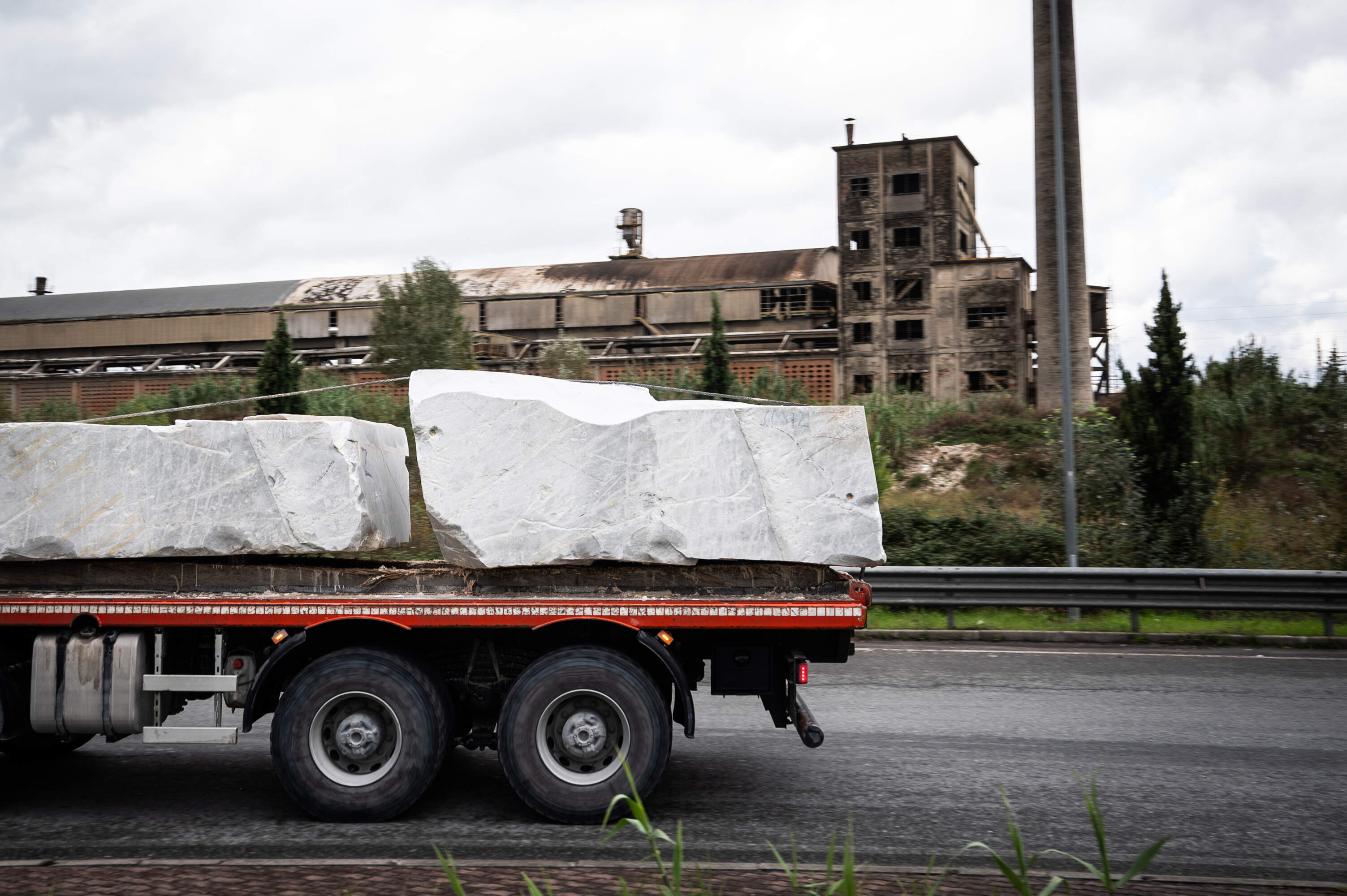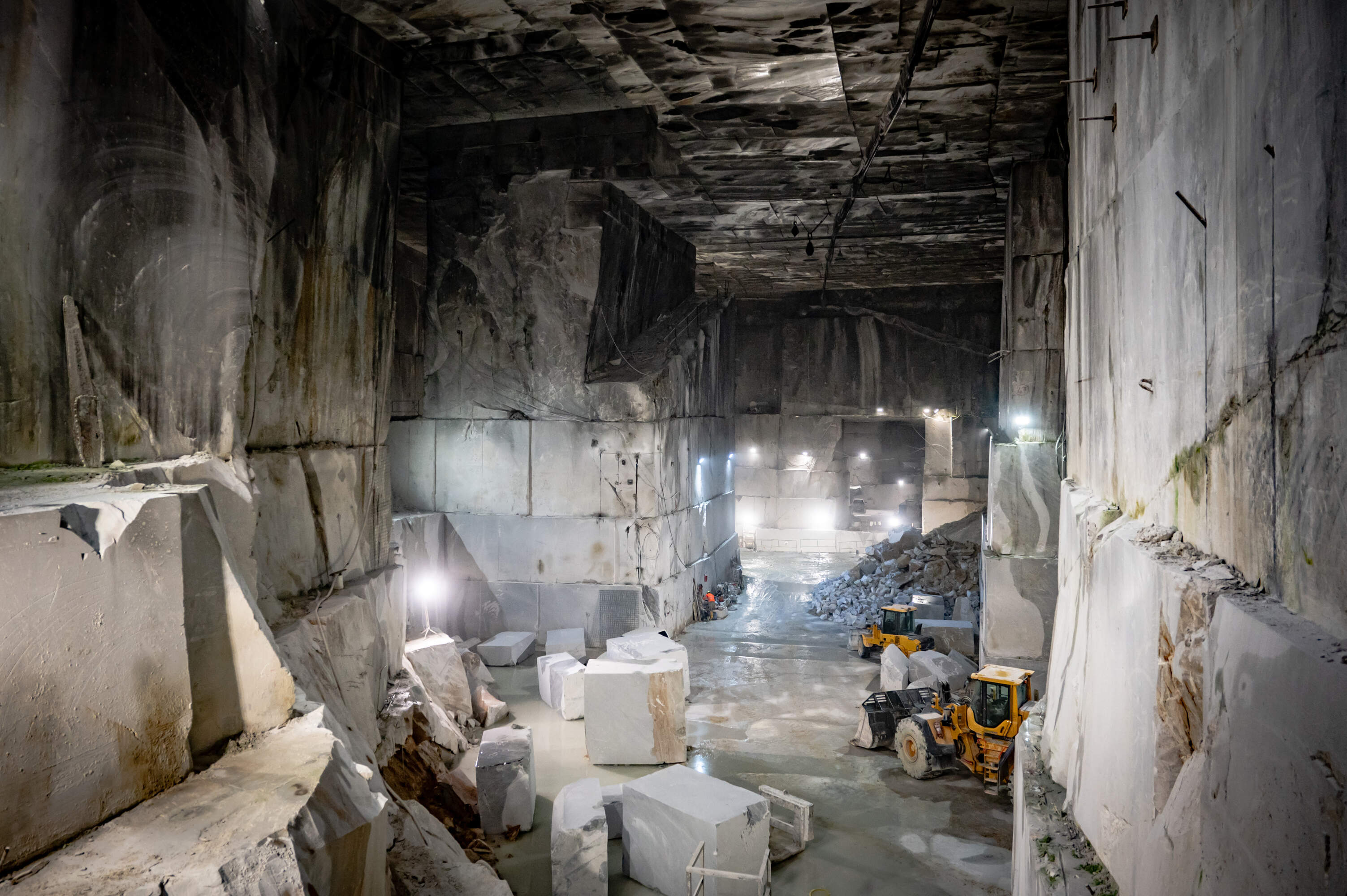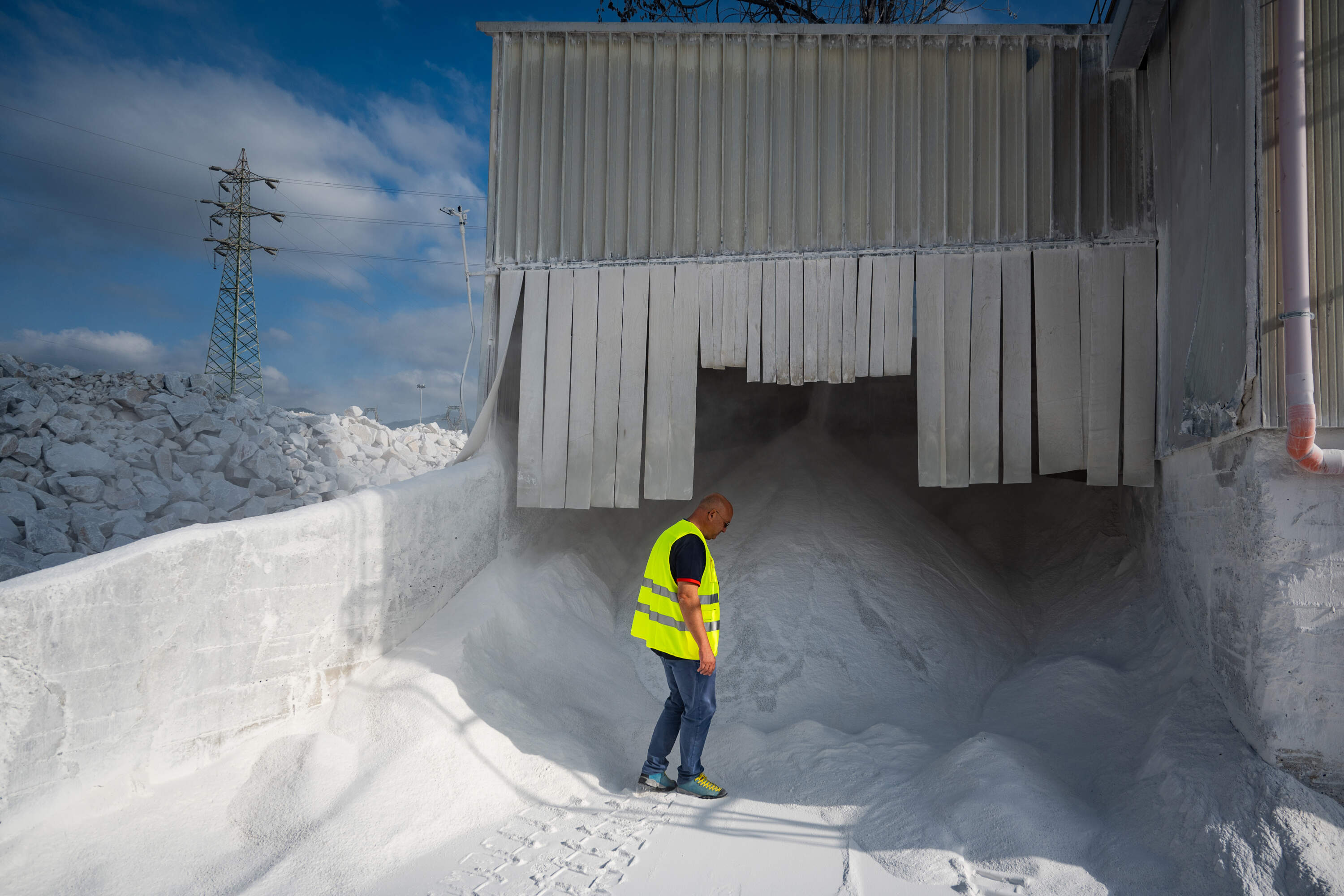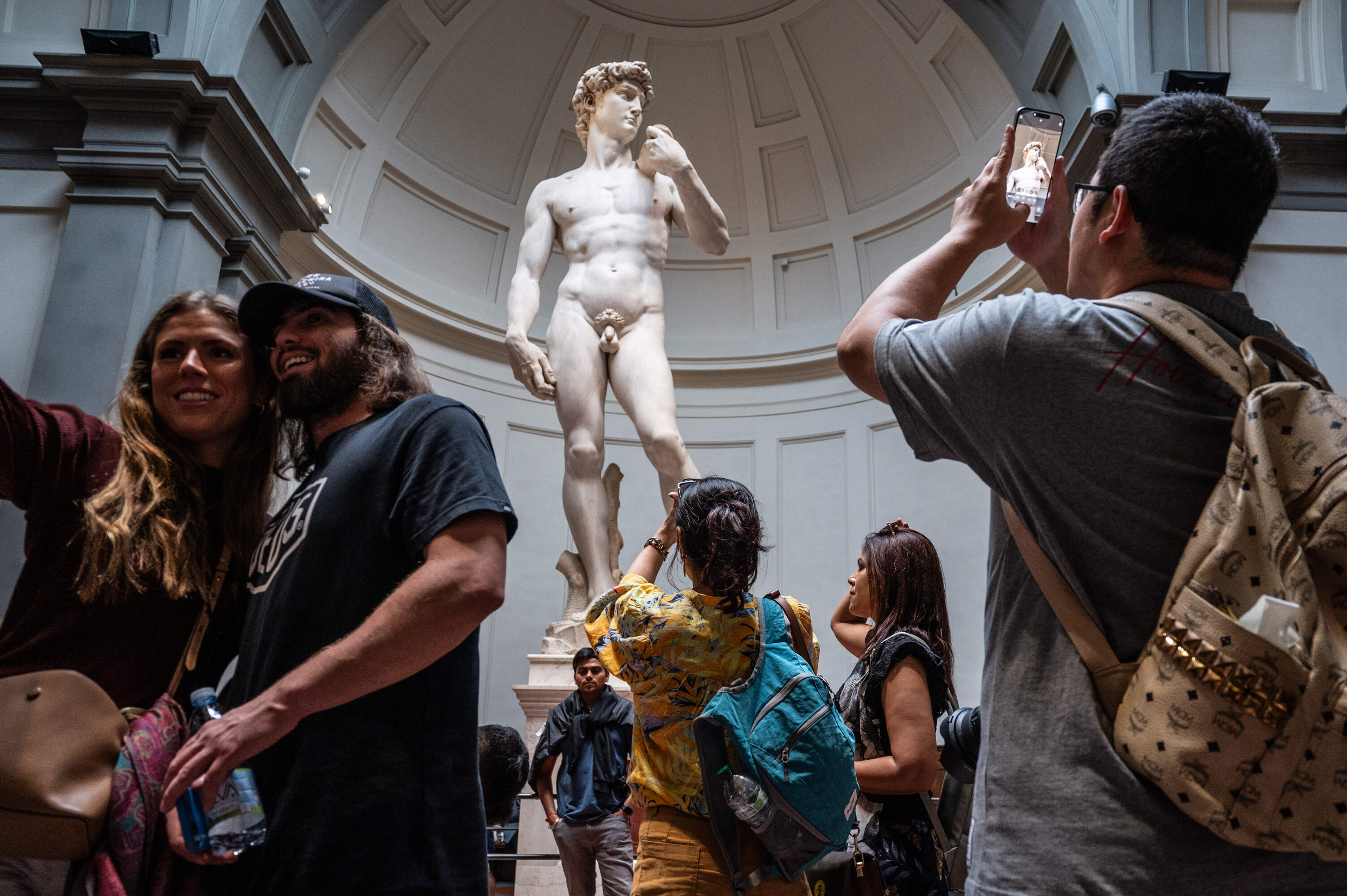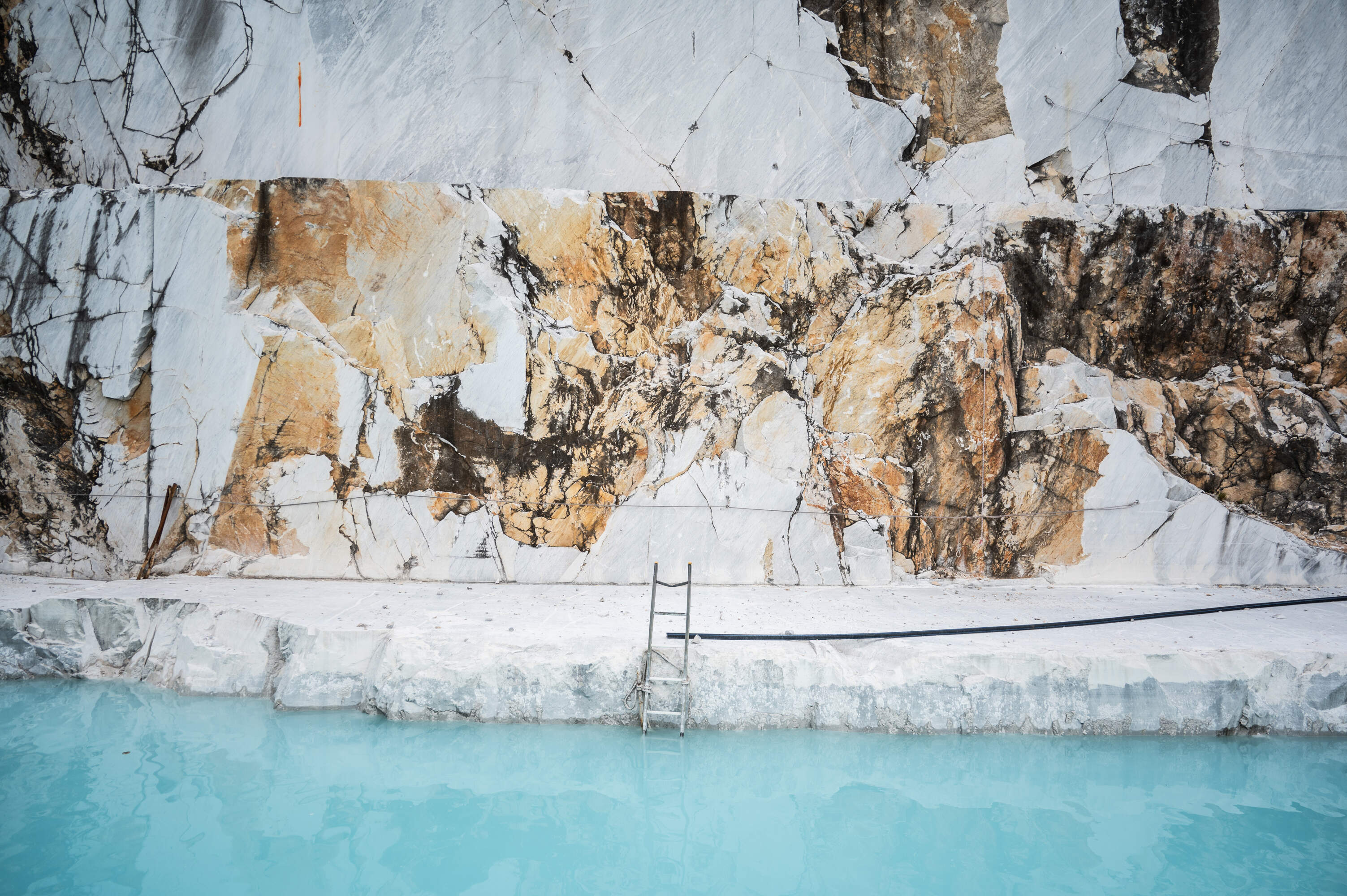The world's most valuable marble has been quarried in Carrara for two thousand years. But is it still sustainable?
Fifteen centuries ago the Gallic poet Namazianus described the Apuan Alps, the source of the world's most prized marble as 'dives marmoribus tellus' - 'a land covered in marble. This marble is the same white gold that was carved by Michelangelo and Canova, the bright stone on which the Romans built their empire.
Italy. A view of the western Apuan Alps with, in the foreground, the Ravaccione quarry and the roads that connect the quarries to places lower down.
Florence, Italy. Tourists look up at Michelangelo Buonarroti's David at the Academy Gallery. A symbol of the Renaissance, standing 5.2 metres tall and made between 1501 and 1504, the statue was carved from a large block of marble that had been lying abandoned for years by the Duomo courtyard.
Italy. Guests at the Vox Marmoris event, a summer evening of performance art and house and disco music concerts organised among the Corsi family's white marble blocks.
Italy. A white marble quarry owned by the company Successori Adolfo Corsi.
Carrara's marble is considered the purest, whitest and most valuable in the world and constitutes the pinnacle of a market in raw stone worth around 25 billion euros globally. Carrara has a unique cultural heritage, a treasure chest of knowledge and tradition that technology in the last century has radically altered.
Today just over six hundred quarrymen are able to extract five million tonnes of marble a year from a hundred quarries; a process that used to require 20,000 workers. Some of this stone is pulverised and sold as calcium carbonate to make toothpaste, paint, fertiliser, paper and more.
Italy. Marble quarry owner Alessandro Corsi (right) toasts a Happy Easter together with his son Giulio (centre) and some employees of the family business, the company Successori Adolfo Corsi.
Italy. A truck carries a block of white marble along the 'Marble Road'. The six-kilometre road, which opened in 2012, has taken heavy traffic out of the city of Carrara but has sparked controversy because of its high cost (120 million Euros) partly borne by Italian citizens.
Italy. Work tools at Granulati Carrara covered in white calcium carbonate powder. A good portion of the marble extracted from quarries today is turned into powder, which is used in many industrial, agricultural and food areas around the world.
Italy. Anarchists demonstrate during May Day (Labor Day) celebrations. The white marble monument behind them is dedicated to Alberto Meschi (1879-1958), an anarchist and trade unionist. Carrara has a long association with anarchist movements, popular as early as the late 19th century among quarrymen.
Italy. The bar of the Errico Malatesta circle in Gragnana, founded nearly 150 years ago and now the oldest anarchist bar in Europe. The province of Carrara has a long association with anarchist movements, popular as early as the late 19th century among quarrymen.
A quarryman's arm tattooed with of the white marble quarries and the moment of the ancient 'lizzatura', the sliding of the very heavy marble blocks from the quarries by hand only, through the use of cables, ropes and lumber.
Italy. Corrado Iacopi of Acquabianca Marmi (behind) checks with a quarryman the quality of a block of white marble in the Carcaraia Quarry.
Italy. Participants take part in the 'historic lizzatura', a reconstruction of how the very heavy marble blocks were moved from the quarries by hand, using only cables, ropes and lumber to slide them down the mountainsides.
Italy. A long road tunnelled into the mountain leading to the Ravaccione white marble quarry.
Italy. Bernarda Franchi waits for some customers in the atelier of her family business, Franchi Umberto Marmi, which, founded by her father Umberto, has been selling marble all over the world since 1971 and is now led by Bernarda and her brother Alberto.
Italy. The town of Colonnata (Italy), which lies beneath marble quarries in the Apuan Alps. Colonnata is famous for the lard produced there, and for being inhabited by marble quarrymen.
Critics such as the Italian association Legambiente point out that more marble has been extracted in the last 30 years than in the last 2,000. According to them 'the protection of the Apuan Alps is seriously threatened by anthropogenic pressure.' In response several wealthy entrepreneurs have started to invest in social projects linked to the local area to ensure that their companies operate sustainably.
Ironically, Carrara needs all the support it can get. The world capital of marble is an increasingly poor, empty and unemployed city as the industry has become mechanised and fewer skilled workers are needed to achieve the same results.
Italy. A view of the Carrione stream running through the city. Despite a centuries-old tradition of marble mining, Carrara is a city with very high rates of poverty and public debt, and blighted neighbourhoods.
Italy. The Carrione stream, which descends from the Apuan Alps skirting the marble quarries and entering Carrara. The whitish colour of its waters is due to so-called 'marmettola', a calcium carbonate slurry produced by the mining and processing of marble whichhas been denounced by environmental groups.
Italy. In the laboratories of the Henraux company two technicians observe the final result of a white Carrara marble capital made by a robot sculptor.
Italy. In the Henraux company's warehouse hundreds of slabs of Carrara marble are ready to be viewed by customers and shipped all over the world.
Italy. Sculpture student Matilde Calamogna at the Academy of Fine Arts
Italy. A sculptor at work in the historic Nicoli workshops in the city centre, which have been in operation for more than 150 years
Italy. A truck carries a block of white marble along the 'Marble Road'. The six-kilometre road, which opened in 2012, has taken heavy traffic out of the city of Carrara but has sparked controversy because of its high cost (120 million Euros) partly borne by Italian citizens.
Italy. At work in the Ravaccione white marble quarry.
Italy. Francesco Marri of Granulati Carrara monitors the quality of calcium carbonate powder, which is used in many industrial, agricultural and food sectors around the world. A good portion of the marble extracted from quarries today is turned into powder.
Florence, Italy. Tourists take photos in front of Michelangelo Buonarroti's David at the Academy Gallery. A symbol of the Renaissance, standing 5.2 metres tall and made between 1501 and 1504, the statue was carved from a large block of marble that had been lying abandoned for years by the Duomo courtyard.
Italy. A white marble quarry owned by the company Successori Adolfo Corsi.
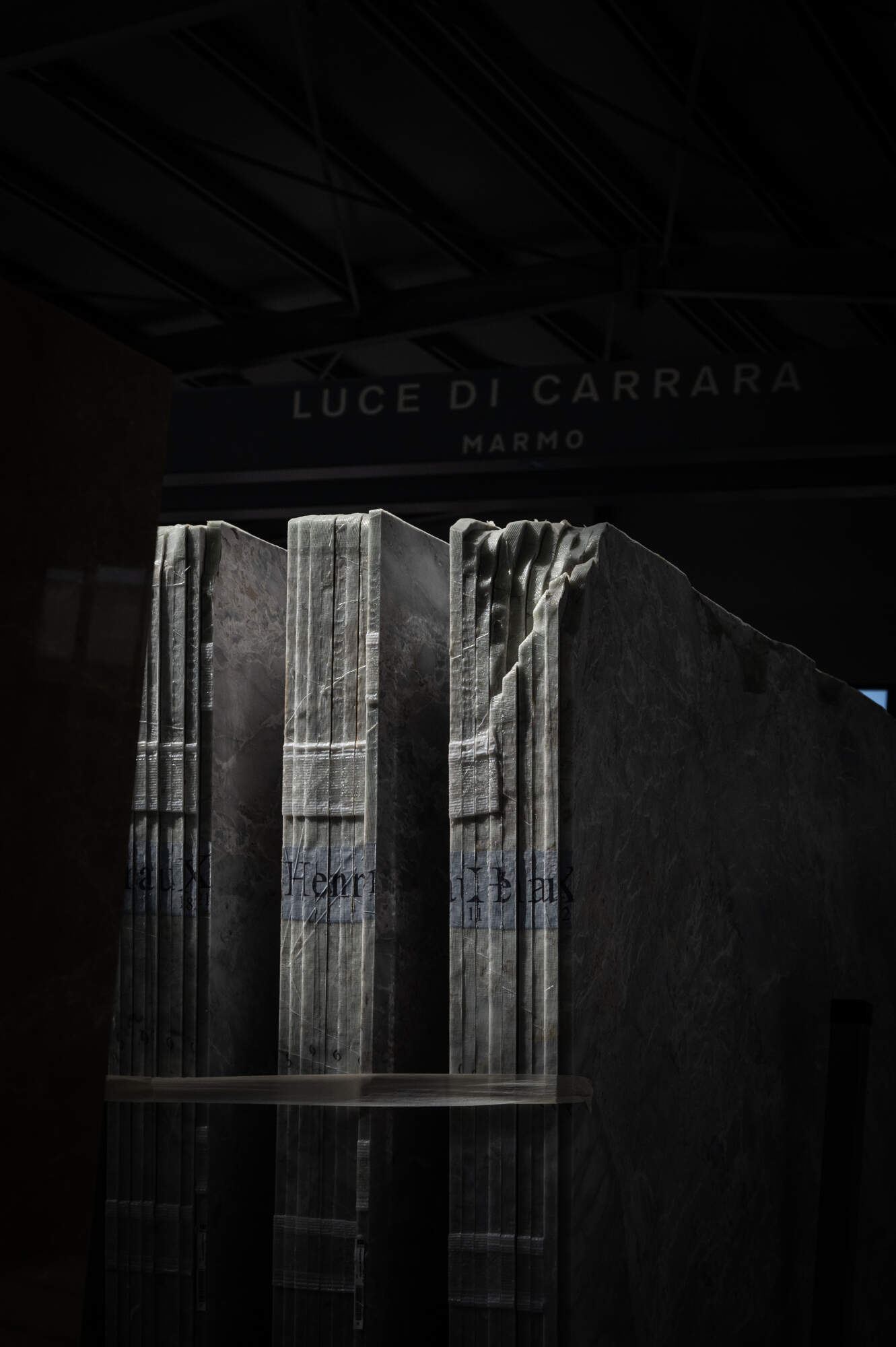
Italy. In the Henraux company's warehouses, slabs of white Carrara marble are ready to be shipped to customers all over the world.
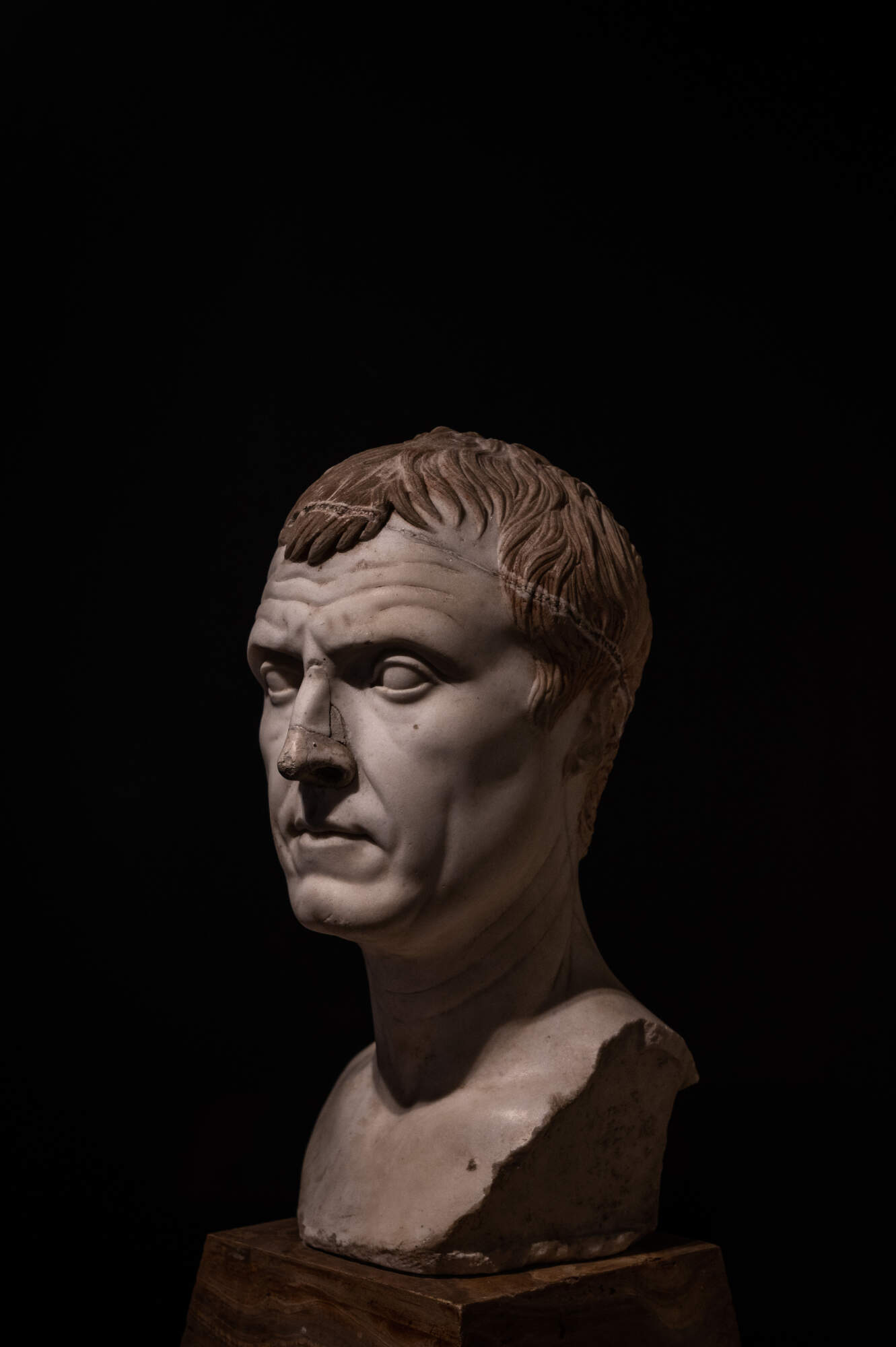
Italy. A marble statue found in the Bottega del Gemmarius and conserved by mud and pyroclastic materials since the eruption of Mount Vesuvius in the year 79 CE.

